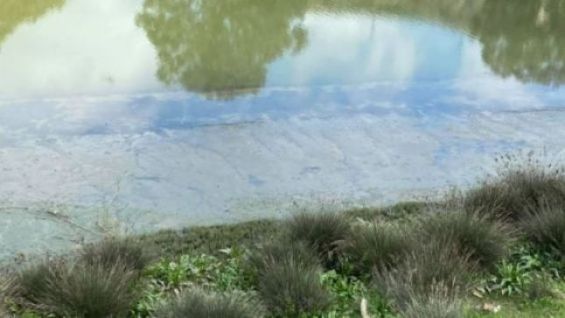With an area of approximately 40,000 km2, the Sebou basin is one of the largest in the Kingdom and constitutes the water source for several thousand hectares of agricultural land. Yet, like other rivers in Morocco, the Oued Sebou is faced with pollution, which affects the quality of its waters. In a recent study, three researchers from the Soil and Water Management Laboratory of the Hassan II Institute of Agronomy and Veterinary Medicine (IAV) were interested in this problem, compiling data from water quality monitoring stations.
In their study, published at the end of March, the researchers warned about the quality of the water, suggesting «urgent action to be taken by the authorities». Indeed, the study indicates that in 59% of the water quality monitoring stations, water is classified as being at an advanced stage of degradation.
Indeed, they recall that «the quality of river water tends to be improved during the rainy season compared to the dry season». However, «several sections (from Sebou) to Meknes, Fès and Inaouen cannot be used for human or animal consumption without treatment». The study thus reports unusual amounts of fecal coliforms, dissolved oxygen, the formula ammonium ion and total phosphorus, among other substances present throughout the year. Parameters indicating a degradation of the water which could «entail a potential risk to health, if the authorities do not take the appropriate management decisions, since this river water is regularly used for irrigation».
For the three IAV researchers, «certain organic pollutants or bacteria can accumulate in crops, and therefore affect human and animal health».
«It is clear that discharges of industrial and domestic wastewater during the dry season and agricultural activities are most likely to be the causes of the degradation of river water quality».
Bouregreg affected by leachate and a drop in its flow
This study comes at a time when Bouregreg, the other Oued also crossing two regions of the Kingdom and finishing its course between Rabat and Salé, is also facing a serious pollution problem. A few weeks ago residents denounced the blackness observed in the river and the foul odors spread in several districts of the capital Rabat as well as in Salé. Local elected officials then alerted that it was leachate caused by significant infiltration from the Oum Azza landfill, via river Akrach.
While the Al Assima Inter-municipal Cooperation Establishment (ECI) has not explained the source of this pollution, elected officials and associations denounced the inaction of this body in the face of a problem that has been aggravated by the confinement and the sanitary crisis.
Bouregreg also faces another problem; that of a regular degradation of the water flow of the watershed. Indeed, in a second study by five Moroccan researchers from the Laboratory of Geophysics and Natural Risks and the Laboratory of Natural Resources, the Environment and Sustainable Development of the Mohammed V University of Rabat, the evolution of precipitation and flows in the Bouregreg watershed is considered worrying. The objective of this study, also published a few days ago, was to «identify the regions most vulnerable to climate change over a period of 36 years from 1977 to 2013».
They warned against a persistent downward trend in the water flow of the Bouregreg watershed, «despite a fairly significant return to better precipitation conditions», during the period studied, which requires in-depth research on the phenomenon.





 chargement...
chargement...













